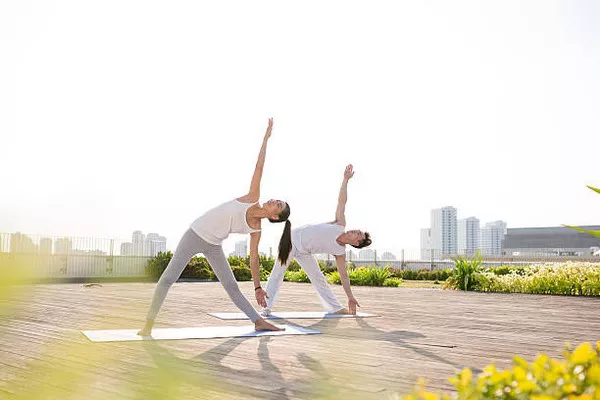Yoga, with its diverse styles and approaches, offers something for everyone. Two popular styles, Vinyasa and Ashtanga, often come up in discussions among yoga practitioners. Both have unique characteristics, benefits, and challenges. This article delves into the differences and similarities between Vinyasa and Ashtanga yoga, helping you decide which might be better for you based on your preferences, goals, and lifestyle.
What is Vinyasa Yoga?
Definition and Origins
Vinyasa yoga, also known as “flow” yoga, is characterized by its fluid transitions and dynamic sequences. The term “Vinyasa” means “to place in a special way,” referring to the careful alignment of movement and breath. Vinyasa originated from Hatha yoga and was popularized by pioneers like T. Krishnamacharya and his students.
Structure and Practice
Vinyasa classes often vary in structure, with each instructor bringing their unique style to the practice. However, they generally follow a sequence of poses that flow smoothly from one to another, synchronizing movement with breath. This creates a continuous, dance-like flow.
Benefits
Improves cardiovascular health: The dynamic nature of Vinyasa elevates the heart rate, providing a good cardiovascular workout.
Enhances flexibility and strength: The variety of poses targets different muscle groups, improving overall flexibility and strength.
Reduces stress: The focus on breath and movement coordination promotes mindfulness, reducing stress and anxiety.
Increases body awareness: The fluid movements help practitioners become more aware of their bodies, improving balance and coordination.
What is Ashtanga Yoga?
Definition and Origins
Ashtanga yoga is a more structured and disciplined style, founded by K. Pattabhi Jois in the 20th century. The term “Ashtanga” means “eight limbs,” referring to the eight-fold path outlined by Patanjali in the Yoga Sutras. Ashtanga follows a set sequence of postures, progressing through six series of increasing difficulty.
Structure and Practice
Ashtanga classes are typically more rigorous, with a fixed sequence of poses that students follow. The practice begins with Sun Salutations, followed by standing poses, seated poses, and finishing poses. Each series builds on the previous one, and practitioners must master each pose before moving to the next series.
Benefits
Builds strength and endurance: The repetitive nature of the sequences builds muscular strength and cardiovascular endurance.
Promotes discipline and focus: The fixed sequence and structured practice cultivate discipline and concentration.
Enhances flexibility: The progressive nature of the series gradually increases flexibility.
Detoxifies the body: The combination of breath and movement generates heat, which helps to detoxify the body through sweating.
Key Differences Between Vinyasa and Ashtanga
Flexibility of Practice
Vinyasa: Offers a flexible and varied practice. Each class can be different, tailored to the instructor’s style or the student’s needs.
Ashtanga: Follows a strict sequence. Each practice session is the same, focusing on mastering the set poses before progressing.
Pace and Intensity
Vinyasa: Can vary in pace from gentle to vigorous. The intensity depends on the instructor and class style.
Ashtanga: Generally more intense and physically demanding. The pace is steady and rigorous, requiring stamina and strength.
Instruction Style
Vinyasa: Instructors often guide the class with continuous verbal cues, adjustments, and variations.
Ashtanga: Often self-led in Mysore style classes, where students practice at their own pace within the sequence, receiving adjustments and guidance from the instructor.
Accessibility
Vinyasa: More accessible to beginners due to its adaptable nature. Instructors can modify poses and sequences to suit different levels.
Ashtanga: Can be challenging for beginners due to its demanding nature and strict sequence. It requires a commitment to regular practice.
Similarities Between Vinyasa and Ashtanga
Focus on Breath
Both styles emphasize the synchronization of breath and movement, promoting mindfulness and concentration.
Physical and Mental Benefits
Both Vinyasa and Ashtanga offer significant physical and mental benefits, including improved strength, flexibility, and stress reduction.
Rooted in Hatha Yoga
Both styles are rooted in Hatha yoga, sharing common principles and poses, although their execution and emphasis differ.
See Also: What Is Focus Flow Yoga
Choosing the Right Style for You
Consider Your Goals
Strength and Endurance: Ashtanga might be better if you’re looking to build strength and endurance through a disciplined practice.
Flexibility and Variety: Vinyasa might suit you if you prefer a varied and flexible practice that can adapt to your needs.
Think About Your Lifestyle
Time Commitment: Ashtanga requires a significant time commitment and regular practice to progress through the series.
Schedule Flexibility: Vinyasa classes can be more easily adapted to fit into a busy or unpredictable schedule.
Assess Your Fitness Level
Physical Demand: Ashtanga is physically demanding and might be challenging for beginners or those with limited mobility.
Adaptability: Vinyasa can be adapted to different fitness levels, making it more accessible to beginners.
Personal Preference
Ultimately, personal preference plays a significant role. Try both styles to see which resonates more with you.
Combining Vinyasa and Ashtanga
Benefits of a Hybrid Practice
Combining elements of both Vinyasa and Ashtanga can offer a balanced approach, incorporating the structure and discipline of Ashtanga with the fluidity and variety of Vinyasa.
Sample Hybrid Routine
A hybrid routine might start with the structured Sun Salutations and standing poses from Ashtanga, followed by a more fluid Vinyasa sequence, and concluding with the finishing poses from Ashtanga.
Conclusion
Both Vinyasa and Ashtanga yoga have their unique strengths and benefits. Choosing the right style depends on your goals, lifestyle, fitness level, and personal preferences. Whether you prefer the dynamic flow of Vinyasa or the disciplined structure of Ashtanga, both practices offer a path to physical fitness, mental clarity, and overall well-being. Consider trying both styles to find the one that resonates most with you, or combine elements of both to create a practice that suits your needs.


